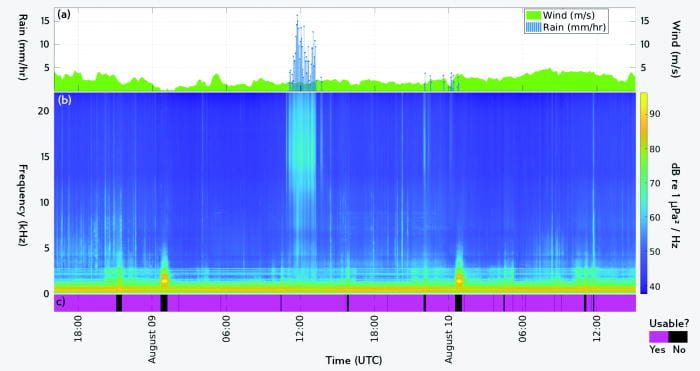A group of researchers including Prof. Amit Tandon have unveiled an innovative approach to studying rainfall patterns in a recent article published in the Journal of the Acoustical Society of America. By harnessing the power of Principal Component Analysis (PCA) and acoustic data using hydrophones, scientists are pushing the boundaries of detecting precipitation. Traditional methods of tracking rainfall rely on weather radar and satellite imagery, which can be limited in remote or heavily vegetated areas. Given that more than 75% of the Earth’s precipitation occurs over the ocean and satellite measurements have large uncertainties, meteorologists and climatologists seek alternate rain detection methods to further improve weather prediction models.
This paper uses data from a weather station, located in the SMAST pier in New Bedford as a reference and simultaneously listened to the rainfall from the hydrophones on the pier to develop a new PCA based rain detection algorithm which exploits broadband acoustic data.

The data collection setup in SMAST pier. The hydrophones are 1 and 2 m below the low-tide line at the end of the pier. Weather measurements occur on the pier itself.

Top (a): Rain and wind recorded by the weather station for a few days in August 2021. Middle (b): A spectrogram of audio data recorded by a pier-mounted hydrophone during this time. Bottom (c): A banded plot showing whether a datapoint is usable in this experiment.
More information about this article can be found here. Congratulations Dr Mallary and team!
Leave a Reply